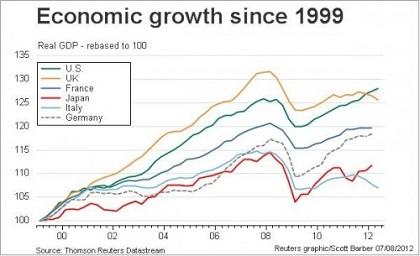Germany’s Economic Growth Surprises Experts in Q1
In an unexpected development, Germany’s economy showcased impressive resilience in the first quarter of the year, achieving a growth rate of 0.4%. This figure is notably double the initial projections, as reported by various news outlets. The revision emphasizes the strength of Europe’s largest economy amid ongoing global uncertainties and challenges such as supply chain issues and escalating energy prices. Economists are now reassessing their predictions, suggesting that this surprising growth could indicate a more optimistic economic trajectory for Germany as it navigates its post-pandemic recovery.
Germany’s Economic Growth Surprises Experts
The recent data revealing a 0.4% increase in Germany’s GDP has caught many analysts off guard, prompting them to reevaluate their forecasts for the nation’s economic performance amidst rising inflation and persistent global supply chain disruptions. Key drivers behind this positive outcome include robust consumer spending and a notable rebound in industrial production that has exceeded expectations.
A closer examination reveals that several sectors within Germany’s economy have demonstrated remarkable resilience, contributing to this encouraging growth figure. Significant factors include:
- Surge in Domestic Spending: Consumers are regaining confidence following pandemic restrictions.
- Export Recovery: A notable uptick in exports, particularly within the automotive industry.
- Technological Investments: Continued investment in digital infrastructure is yielding positive results.
This progress reflects cautious optimism among policymakers eager to see if these trends will persist, supported by effective fiscal policies and monetary assistance. The latest statistics suggest a potentially more stable economic environment ahead, paving the way for discussions on future fiscal strategies over coming months.
Factors Behind Germany’s Economic Expansion
The recent surge in Germany’s economy can be attributed to several pivotal elements driving its unexpected upward trend. Primarily, a strong revival in consumer expenditure has been crucial; with pandemic restrictions easing, households have returned to shopping and dining out—revitalizing local businesses and boosting retail sales significantly. Furthermore, exports have experienced substantial growth due to heightened demand for German machinery and vehicles across international markets like Asia and North America—this export-led expansion complements domestic consumption while highlighting the durability of Germany’s industrial sector.
An additional factor contributing to this economic upswing is strategic government intervention aimed at fostering growth through increased public investment—particularly focused on infrastructure projects and green energy initiatives—which not only creates jobs but also lays groundwork for sustainable long-term development. Moreover, favorable labor market conditions characterized by low unemployment rates coupled with rising wages have bolstered consumer confidence further enhancing overall economic performance during this period.
Strategies for Sustaining Economic Momentum
Germany must adopt strategic measures addressing both immediate challenges as well as ensuring long-term stability. Key initiatives may include:- Pursuing Infrastructure Development: Enhancing transportation networks alongside digital infrastructure can improve efficiency while creating job opportunities.
- Aiding Small Businesses (SMEs): Providing targeted financial support along with advisory services can empower SMEs towards expansion efforts while investing further into technology advancements.
- Dedicating Resources Towards R&D: Increasing investments from both government entities alongside private sectors into research endeavors positions Germany favorably within emerging industries globally.
Cultivating an attractive environment for foreign investments remains essential; policymakers should consider actions such as:
- Simplifying Regulations:Create streamlined processes that attract international firms looking to establish operations within German borders;
- Encouraging Sustainable Practices: Promoting green technologies aligns with global environmental trends while attracting investment;n
- Enhancing Vocational Training Programs: Strengthening education initiatives ensures workforce adaptability amidst evolving job market demands;n
n
| Strategy | Impact |
|---|---|
| Infrastructure Investment | Boosts efficiency & job creation |
| Support For SMEs: | Fosters innovation & expansion |
| R&D Funding:< / b > td >< td >< b style = ' font - weight : bold ; '>Establishes leadership position< / b > td > tr >
| <b></tbody> </table> Future ProjectionsGermany’s economy has shown remarkable resilience against global adversities with an impressive first-quarter growth rate of 0.4%, far exceeding earlier estimates made by analysts.This data highlights how effectively it can recover from previous strains fueled primarily through strong consumer activity coupled alongside robust industrial output levels . As experts continue monitoring these developments , implications remain significant not just domestically but also internationally . Policymakers are likely leveraging positive indicators like these towards boosting investor confidence whilst businesses adapt strategies accordingly aiming capitalize upon improved conditions ahead . The forthcoming months will prove critical as they navigate potential obstacles striving maintain sustained upward trajectory moving forward. |
